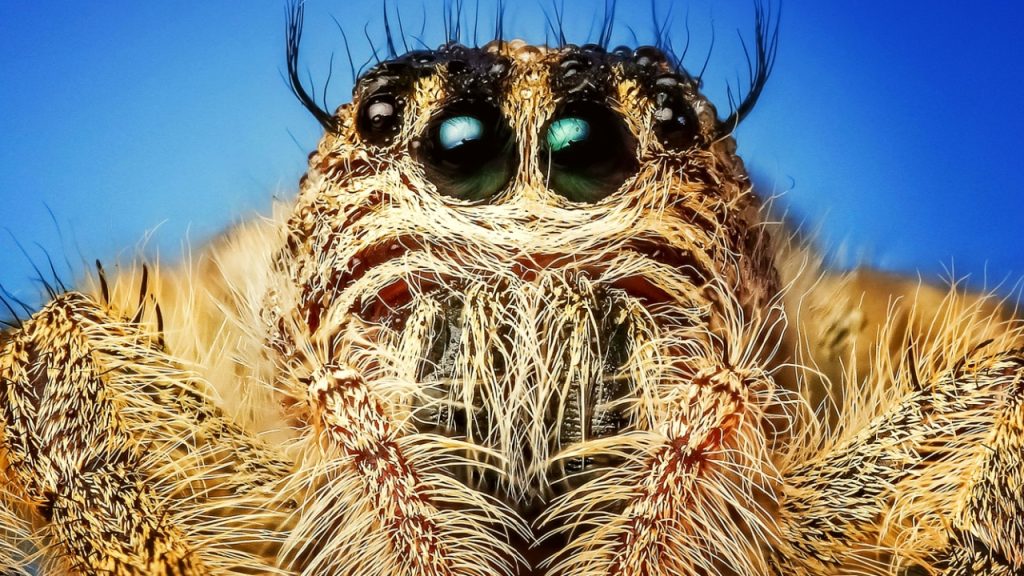For most of the year, spiders in the UK prefer to stay hidden in our homes and gardens. They’re usually out of sight and, therefore, out of mind. However, once the weather changes, you may suddenly start noticing these eight-legged visitors more often around your house.
Don’t worry—most of the spiders you find in the UK are completely harmless to humans, even if they can give us a bit of a scare. Whether they’re lurking in the corners of your living room, hanging out in the bathroom, or dangling from your ceiling, these arachnids are often misunderstood. Stick around, and I’ll walk you through the most common types of spiders you’re likely to see in your home and some of the most frequently asked questions about them.
I live in a really old property, so even if I wanted to get rid of the spiders, I’d be fighting a losing battle. We mostly co-exist. They get to hang out everywhere apart from the bedrooms, and in return, they do a great job of keeping other pest numbers down. If they do venture into the bedrooms, I don’t kill them, I catch them and release them outside. Same if they really get too big – I thin the herd by removing the largest beasties and popping outdoors.
False Widow Spider
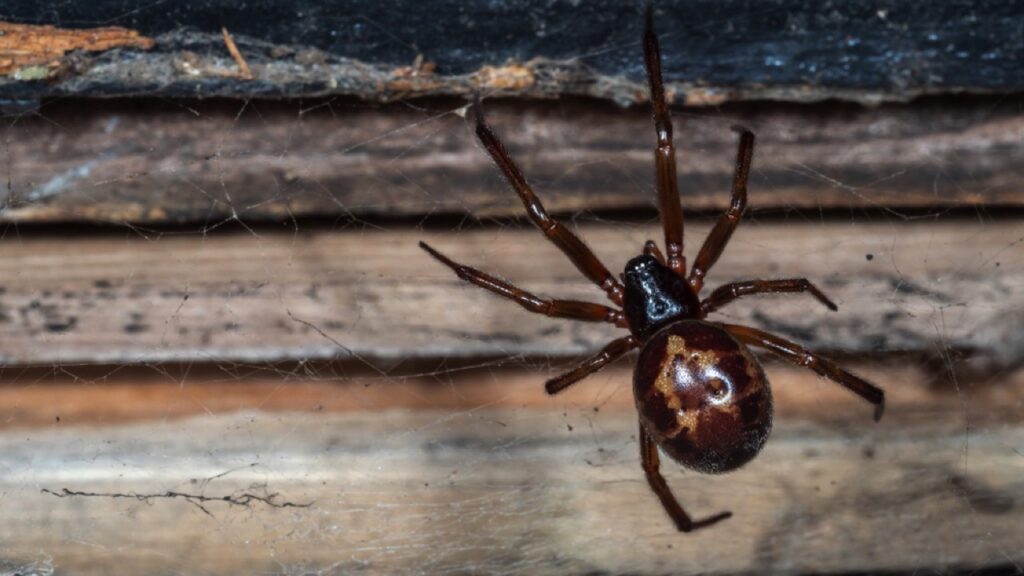
The False Widow might have a reputation that sounds alarming, but they’re not usually dangerous to humans. However, if one gets trapped in your clothing, it may bite. These bites are generally mild, but if you experience prolonged irritation, it’s worth seeing a GP. They prefer quiet, undisturbed corners and often build their webs near windows or doors where they can catch insects.
Jumping Spider
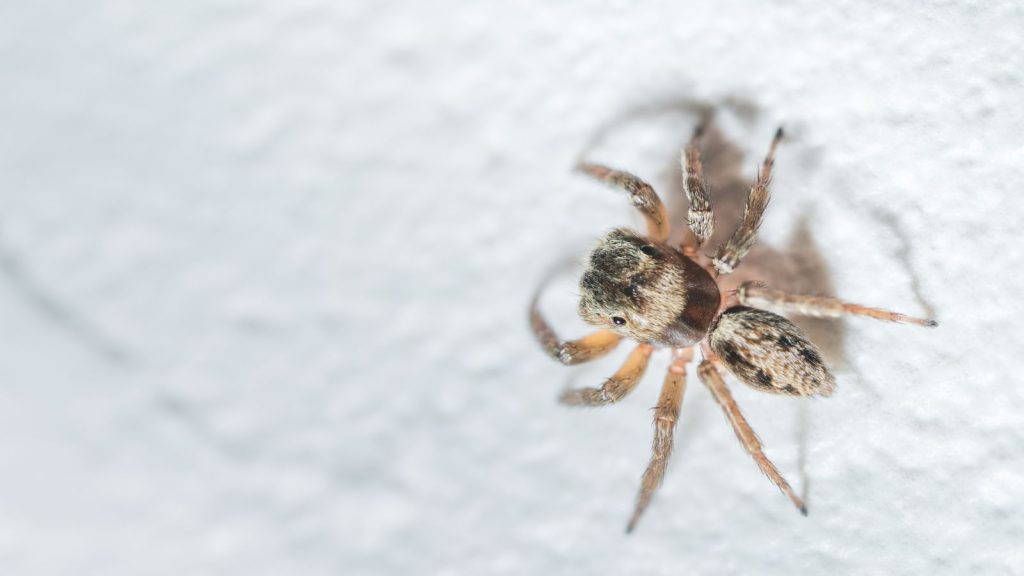
Jumping Spiders are part of the largest spider family in the UK. They have four pairs of eyes, giving them excellent vision. They use this to their advantage when leaping on their prey. While small, they are surprisingly agile, and you’ll often spot them darting around window sills or sunny spots in the home where they hunt small insects.
Buzzing Spider
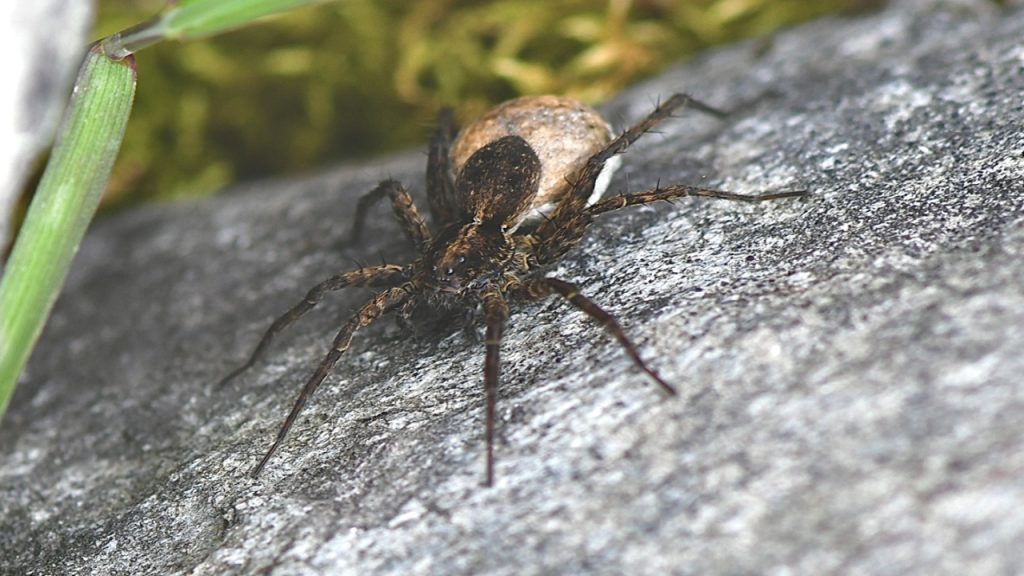
The male Buzzing Spider vibrates on leaves to attract a mate, hence the name. You’re more likely to see them in southern areas of the UK, where they live in trees and shrubs, avoiding the ground to feel safer. Their unique mating behavior makes them one of the more interesting spiders, though they’re rarely seen indoors.
Labyrinth Spider
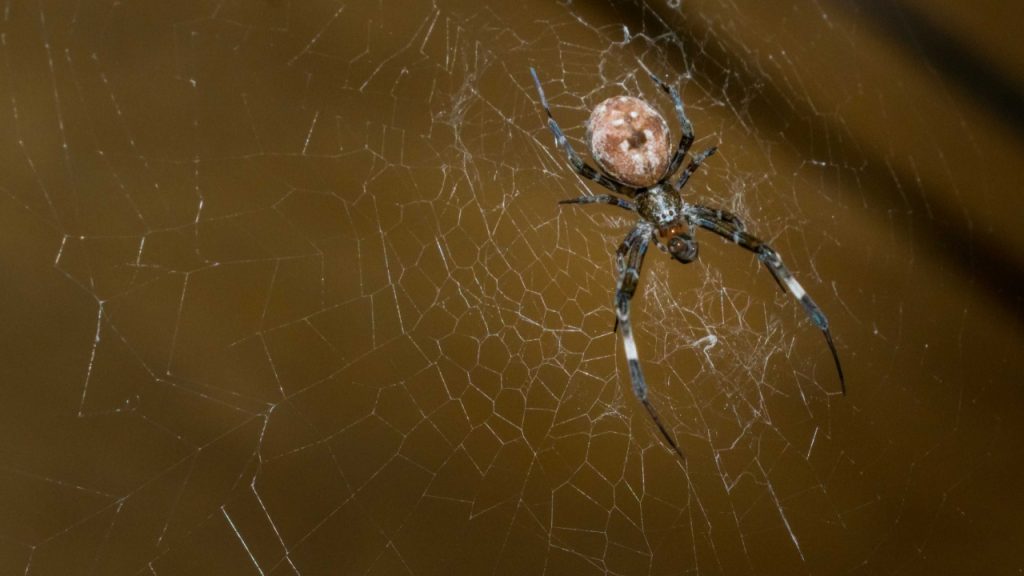
The Labyrinth Spider weaves intricate webs that funnel into tunnels. Found mainly in hedgerows and tall grass, these large spiders are most common in Wales and England. They are named for their elaborate webs, which they use as traps, and their tunnels act as a safe hiding place for consuming their prey.
Orb Weaver Spider
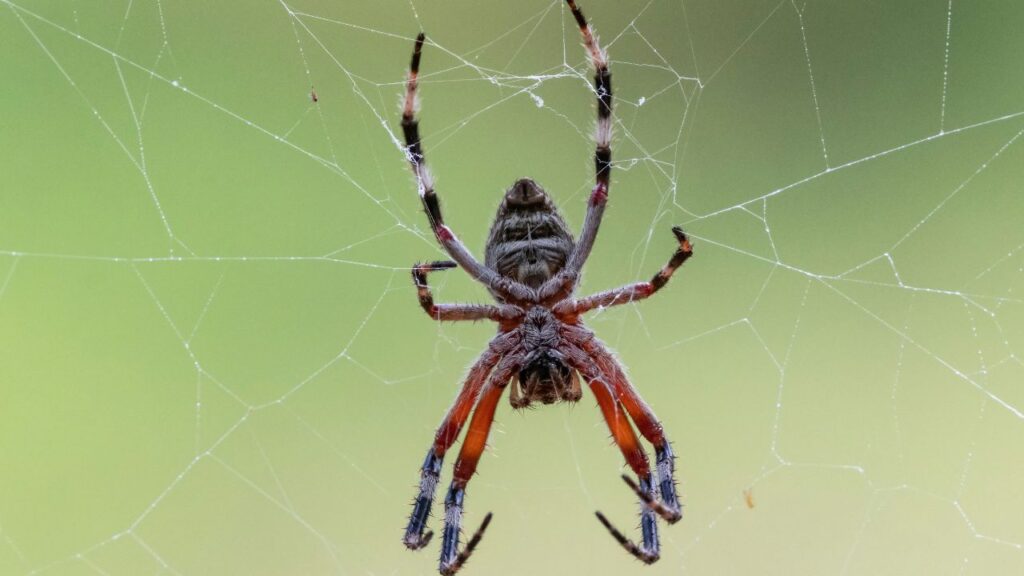
Orb Weavers are best known for their distinctive, large webs. These spiders help control flies and other insects, spinning their beautiful webs from July through October. Their webs can sometimes stretch between fences or plants in your garden, creating a delicate yet effective insect-catching design.
Money Spider
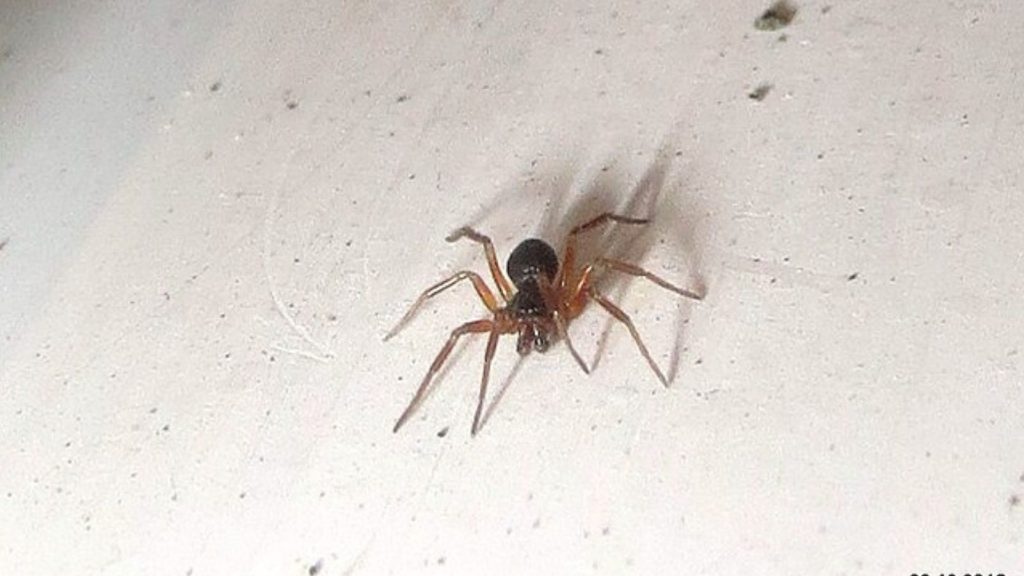
Money Spiders are tiny, usually only about five millimeters long. Despite their small size, they’re believed to bring good luck if they land on you. You can identify them by their glossy brown appearance. They’re often found in grassy areas, weaving small, sheet-like webs close to the ground.
Running Crab Spider
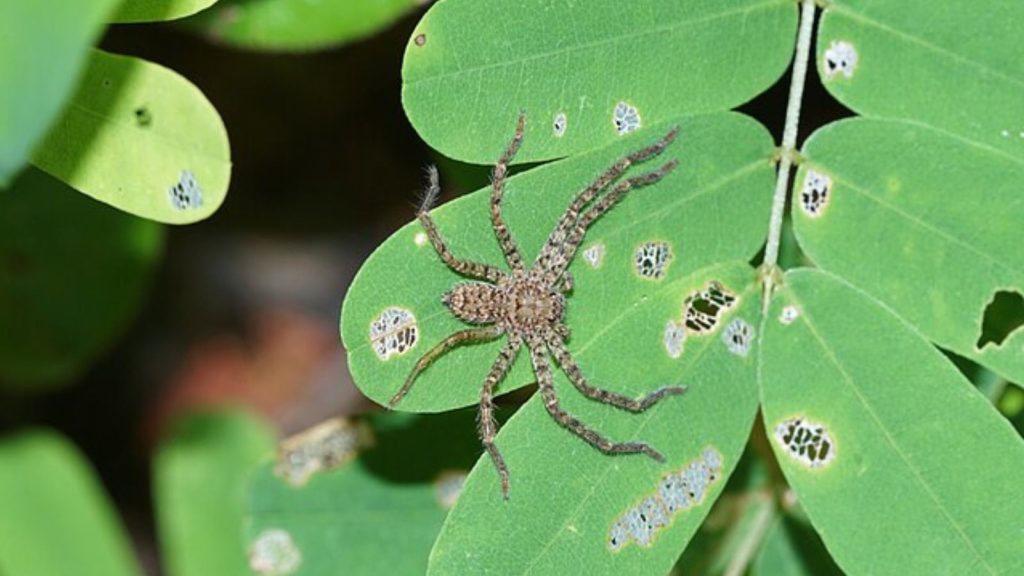
This small spider is found in grassy areas in England and Wales. True to its name, the Running Crab Spider scuttles quickly across surfaces in search of prey. Unlike other spiders, they don’t build webs; instead, they rely on their speed to catch insects by surprise.
Green Huntsman Spider
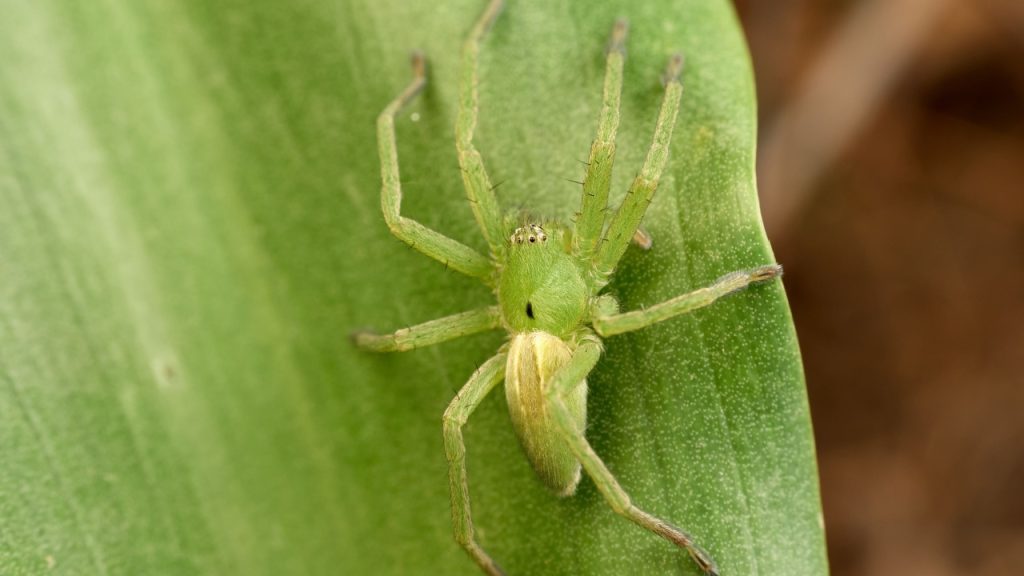
Unlike its more notorious cousins from warmer climates, the UK’s Green Huntsman Spider isn’t dangerous. These rare spiders are found in woodlands, mainly in the South of England and Ireland. Their vibrant green color helps them blend into leaves, making them excellent ambush predators of small insects.
Sector Spider
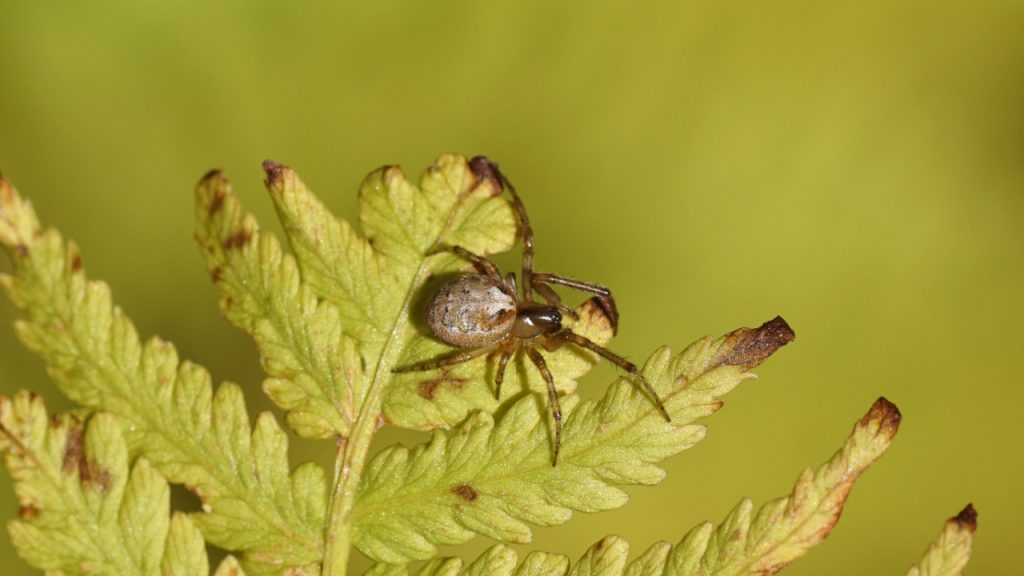
The Sector Spider, also known as the Missing Sector Orb Weaver, prefers indoor environments and is often spotted near windows. They are solitary spiders with a distinctive leaf-like marking on their backs. Their webs are asymmetrical, which makes them easy to identify if you happen to come across one in your home.
Spitting Spider
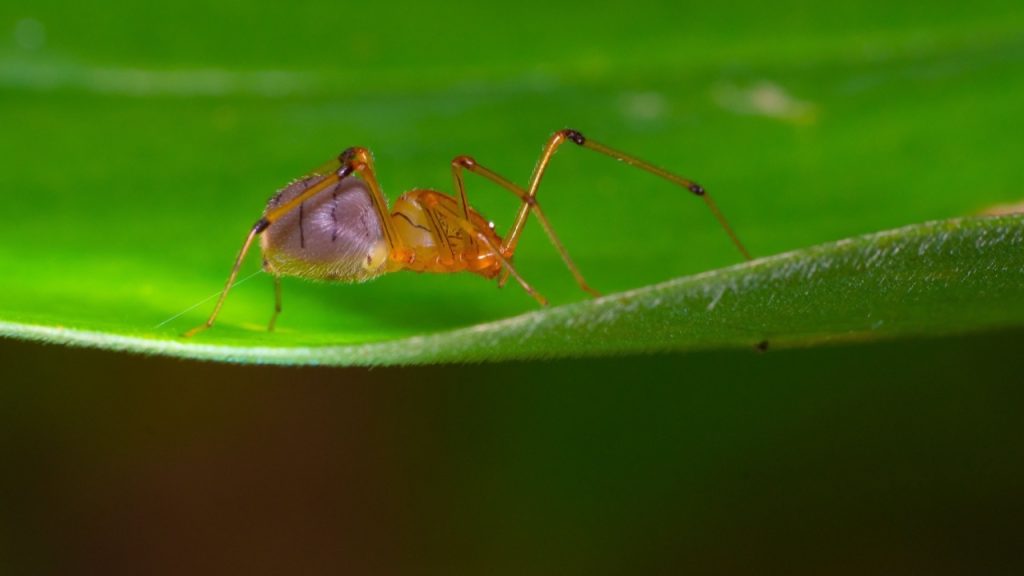
Spitting Spiders are known for their unusual hunting technique: they spit a sticky substance to trap prey, making them quite the unique spider in the UK. They have long, slender legs and slow, deliberate movements. You’ll often find them hunting down flies and small insects on walls or ceilings.
Cucumber Green Orb Spider
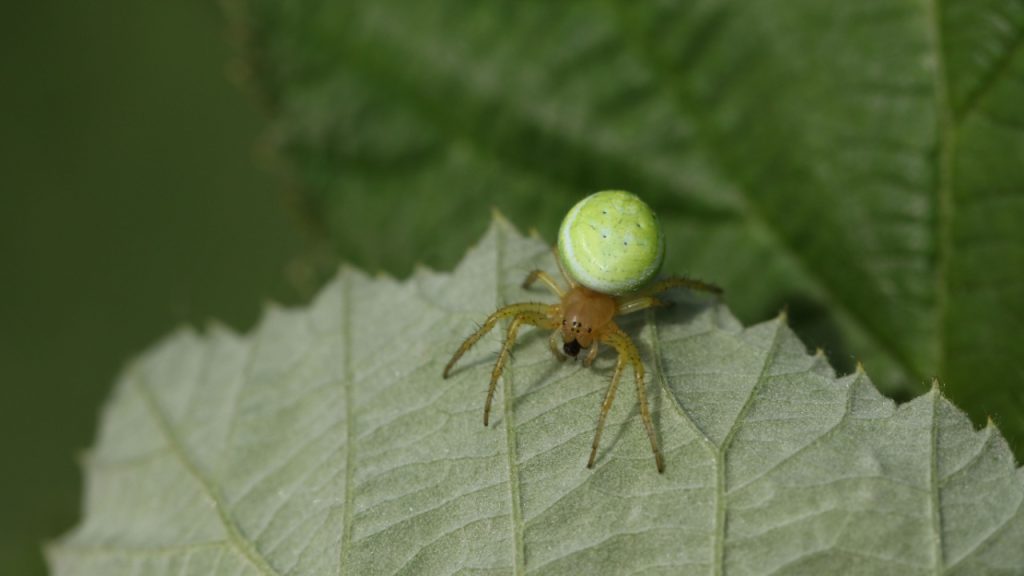
The green color of the Cucumber Green Orb Spider makes it stand out. You’ll find these spiders in hedges and shrubs from April to October, where they catch their prey in orb-shaped webs. Their vibrant color acts as camouflage, helping them blend seamlessly into the leaves and foliage.
Lace Web Spider
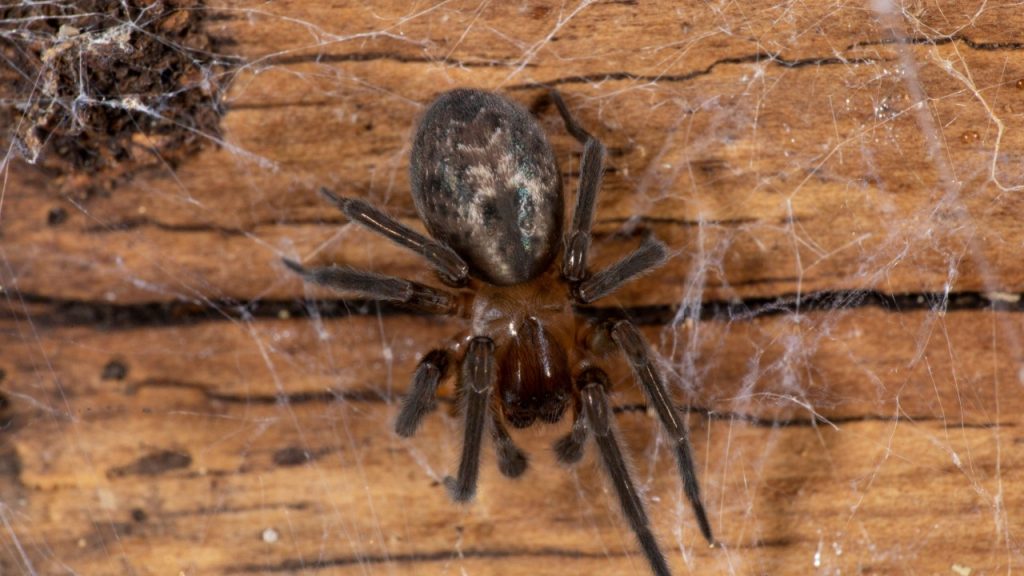
You’ll typically find Lace Web Spiders in cracks or holes in walls and trees. Their webs, which resemble woolly lace, give them their name. They’re most active after rainfall, and their woolly webs are designed to trap moisture, making them a common sight in damp areas of your home.
Cellar Spiders
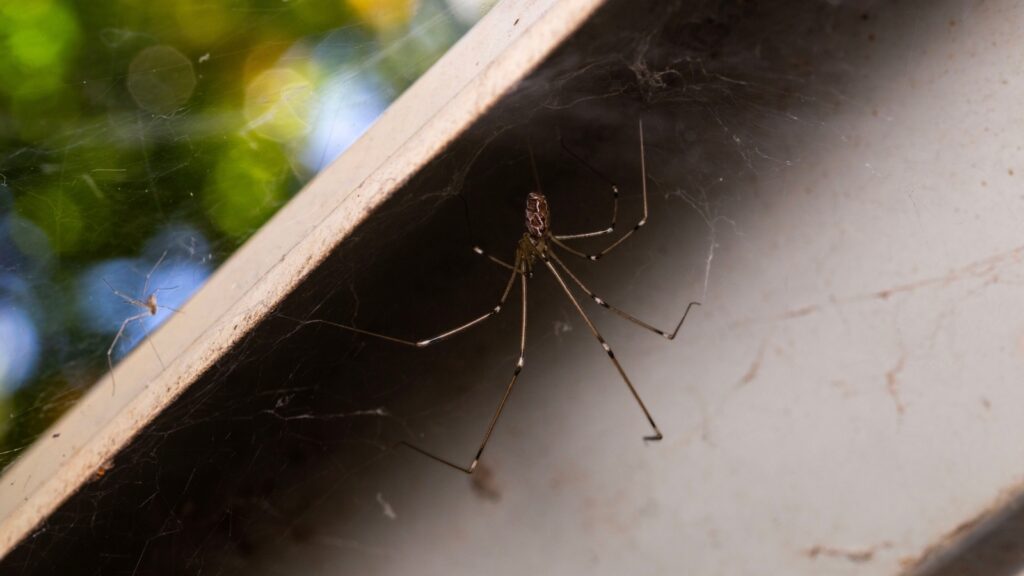
Better known as Daddy Long Legs, Cellar Spiders are some of the most common spiders in the UK. With their thin, long legs, you’ll often find them in the corners of rooms, especially in late summer. They’re harmless to humans but great at catching flies and other insects, making them excellent pest controllers.
Common Fox Spider
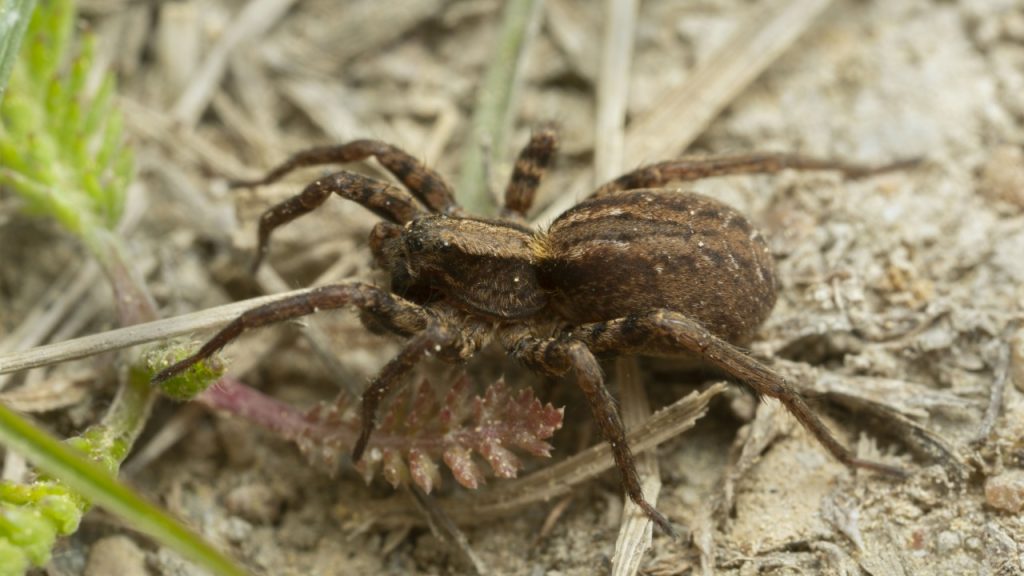
Although the Common Fox Spider is critically endangered in the UK, sightings still happen. These spiders hunt actively rather than using webs and are usually found burrowed in sandy soils. As ground-dwelling hunters, they rely on their speed and stealth to capture prey like beetles and ants.
Cave Spider
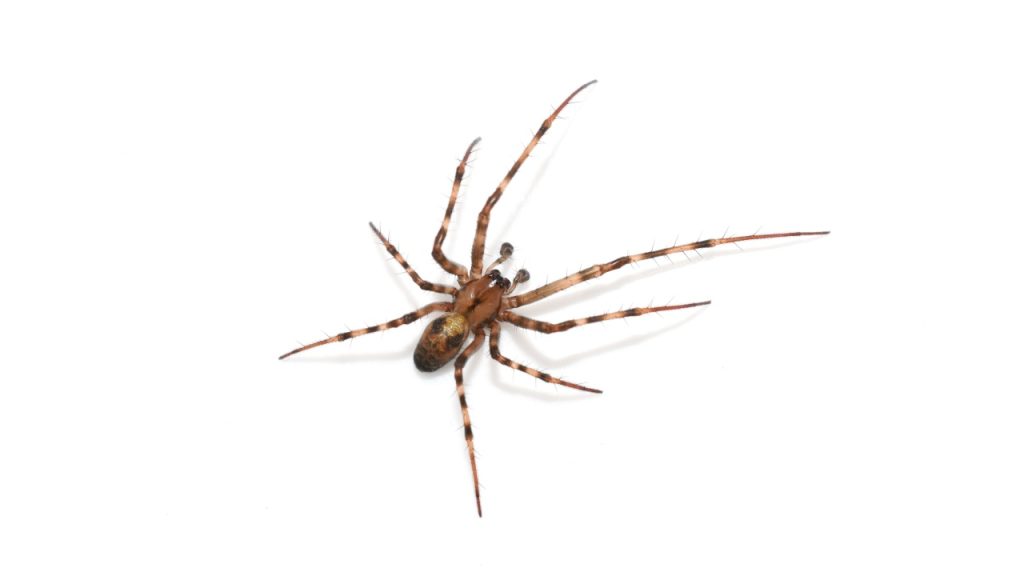
Cave Spiders prefer dark, damp places, as you might guess from their name. They’re most common in caves but can sometimes be found in basements or other dark corners. Unlike other spiders, they thrive in areas with minimal light, making their habitats unique.
Four Spot Orb Spider
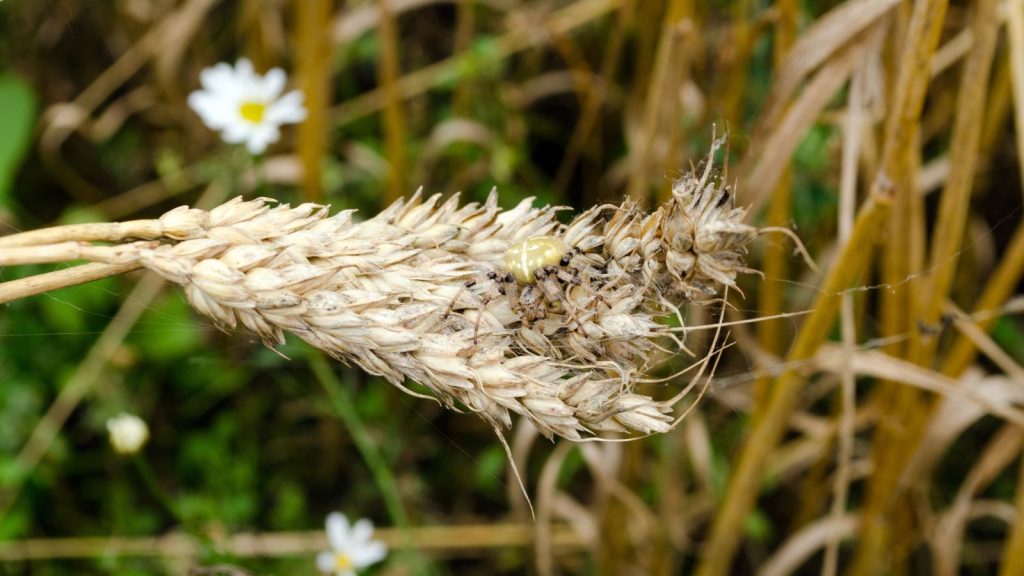
The Four Spot Orb Spider is the UK’s heaviest spider. Females can grow up to 17mm and are easy to spot due to the four white spots on their body. These spiders spin large orb webs in gardens and grassy areas and are often found sitting patiently in the center, waiting for insects to get caught.
Crab Spider
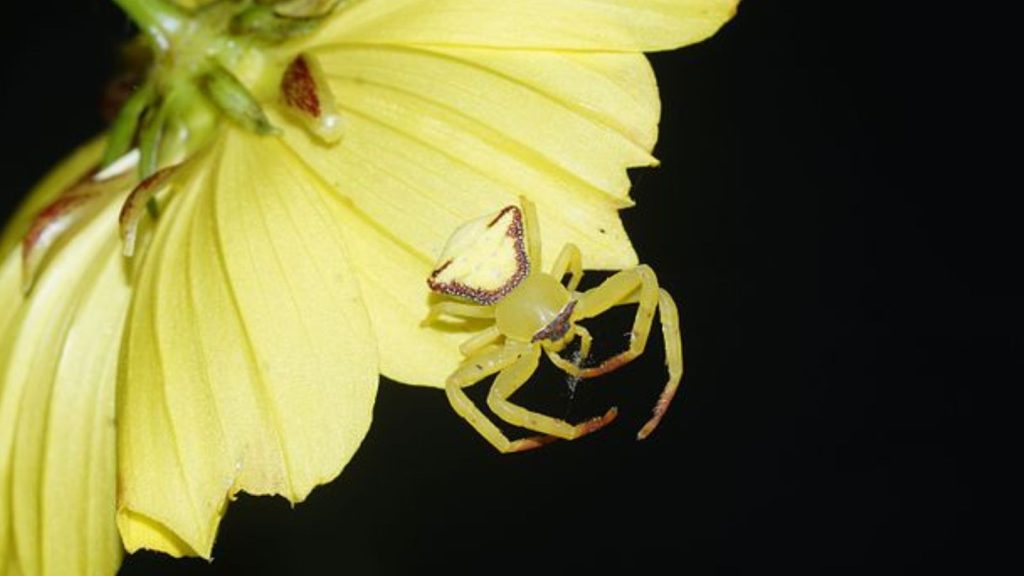
The Crab Spider gets its name from its crab-like legs and movement. Instead of spinning webs, they ambush their prey by jumping on them. Their ability to change color to match their surroundings, such as flowers, makes them expert hunters of bees and butterflies.
Giant House Spider
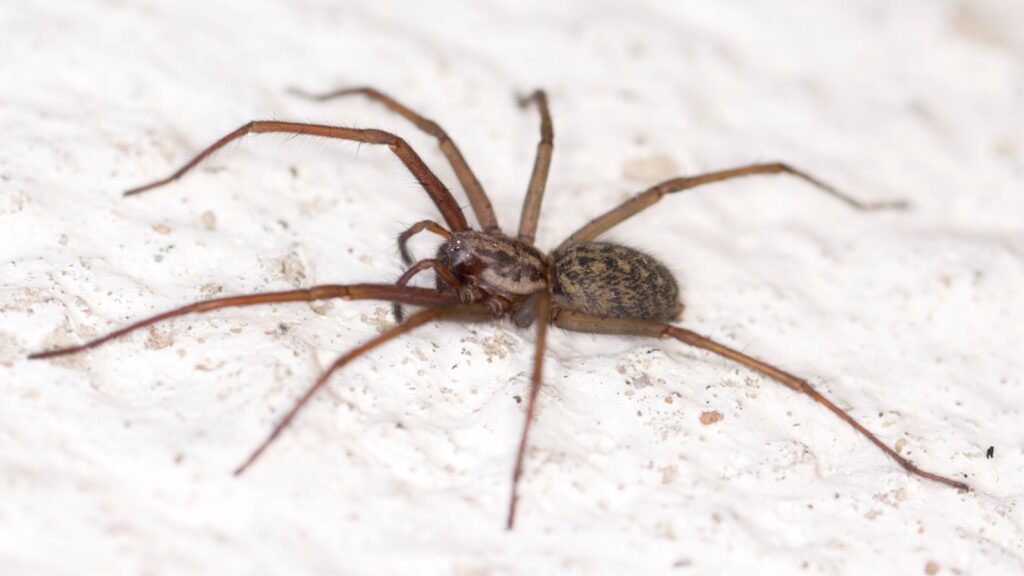
The Giant House Spider is exactly what it sounds like—big! It’s one of the fastest spiders, capable of running half a metre in just a second. They’re often found in corners, basements, or attics, where they look for sheltered spaces to spin their funnel-shaped webs.
European Garden Spider
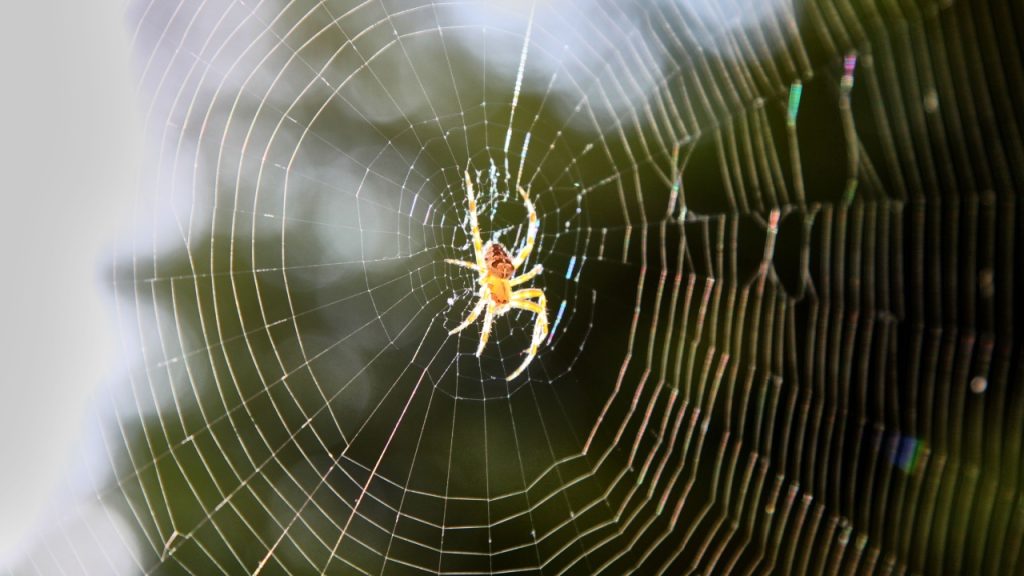
Common across the UK and Europe, the European Garden Spider is often called the Diadem Spider or Pumpkin Spider. It’s well-known for the white cross markings on its back and can usually be found in gardens. They build large, intricate webs and are most active in the early morning or evening.
Cupboard Spider
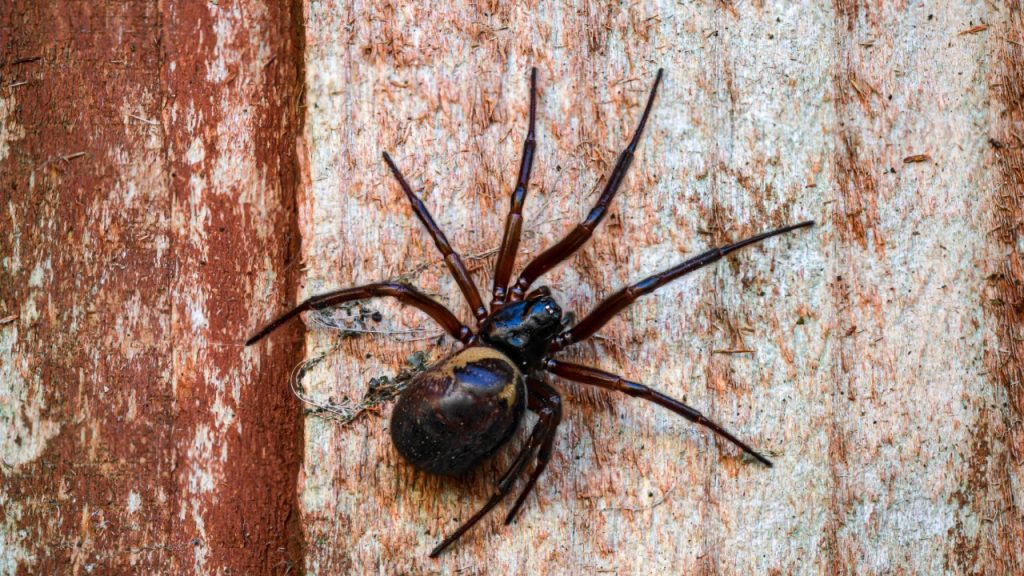
As their name suggests, Cupboard Spiders like to make their homes in your cupboards. They’re sometimes confused with the Black Widow due to their appearance. While they’re not as dangerous, they do produce strong webs that can often be found in dark, quiet areas of your home.
Zebra Spider
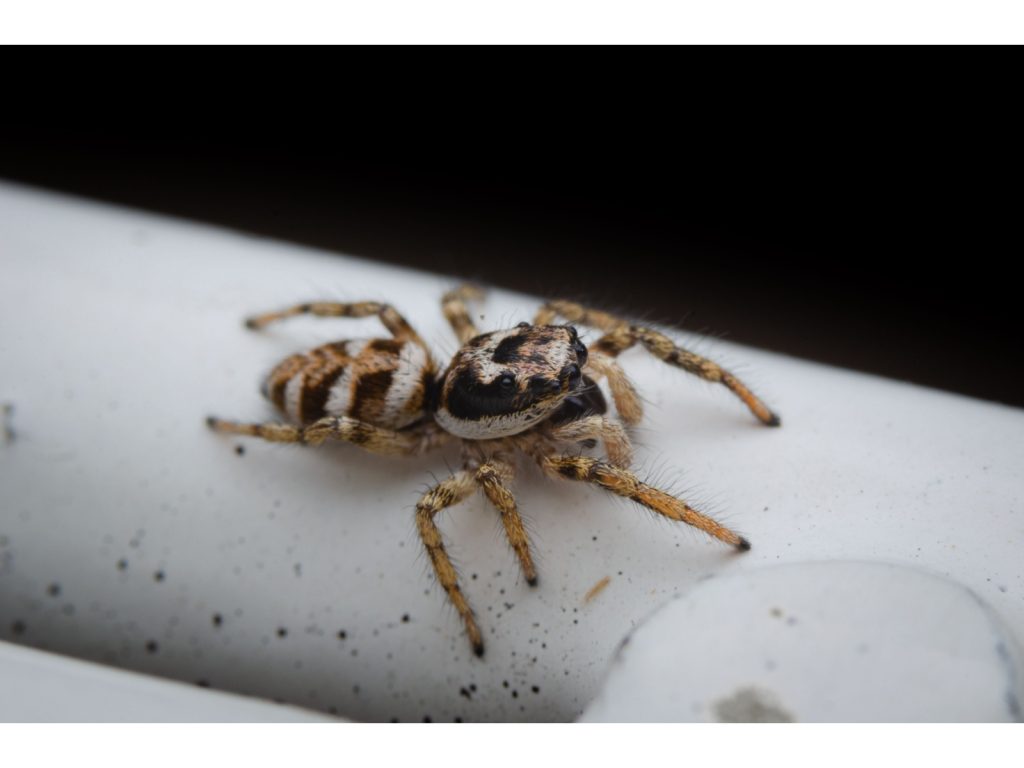
Zebra Spiders are a type of jumping spider, easily recognized by their black-and-white striped bodies. While they’re small, they’re incredibly fast and can leap several times their body length. They use their excellent eyesight to stalk and pounce on unsuspecting insects, particularly in sunny spots.
Cardinal Spider
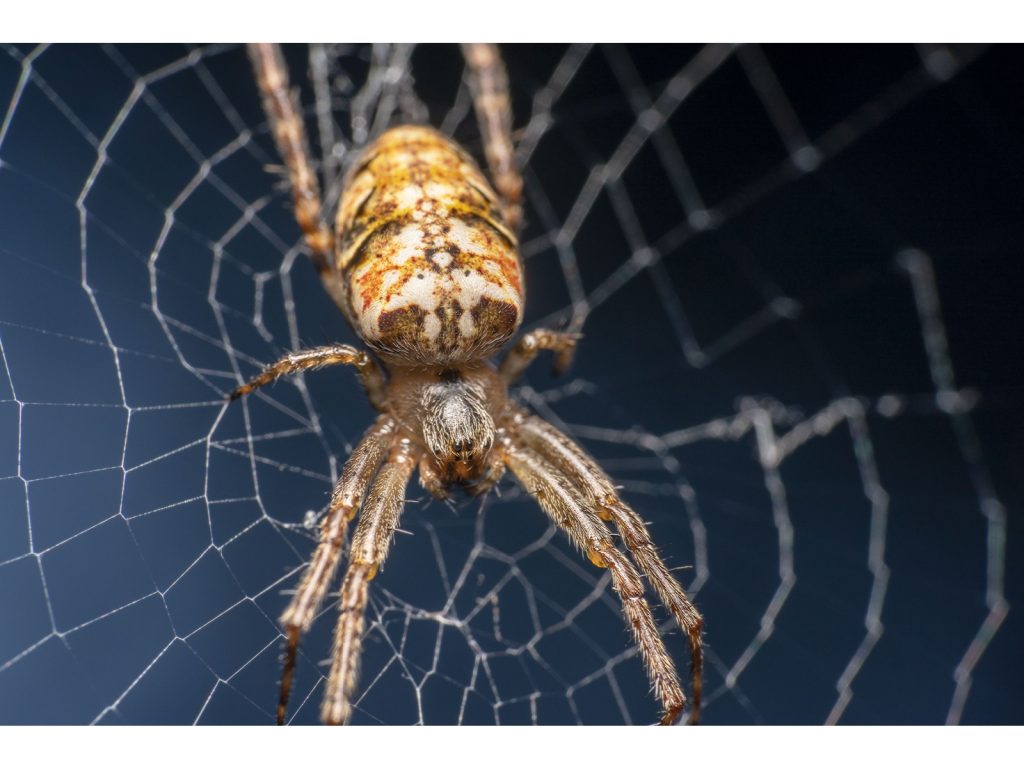
The Cardinal Spider, also known as Tegenaria Parietina, is one of the largest spiders in the UK, growing up to 14 cm. You’ll often find these reddish-brown spiders in walls and buildings. They have a long lifespan and can survive for months without food, which makes them well-suited for indoor environments like attics or basements.
Why Do Spiders Come Into Our Homes
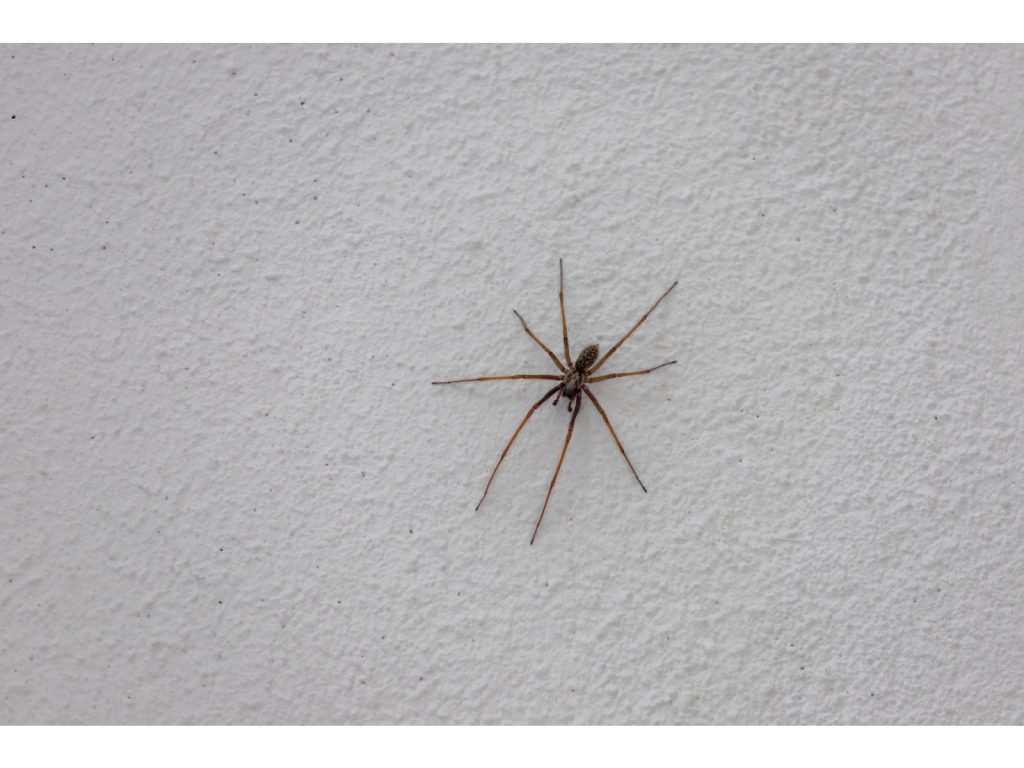
Much like us, spiders seek warmth and shelter, especially when the weather outside cools down. Just like any living thing, they also need water to survive.
Kitchens and bathrooms are the prime spots where spiders might hang out. The moisture from sinks and dishwashers, along with the warmth from various appliances, creates an inviting environment for them.
When Is Spider Season in the UK?
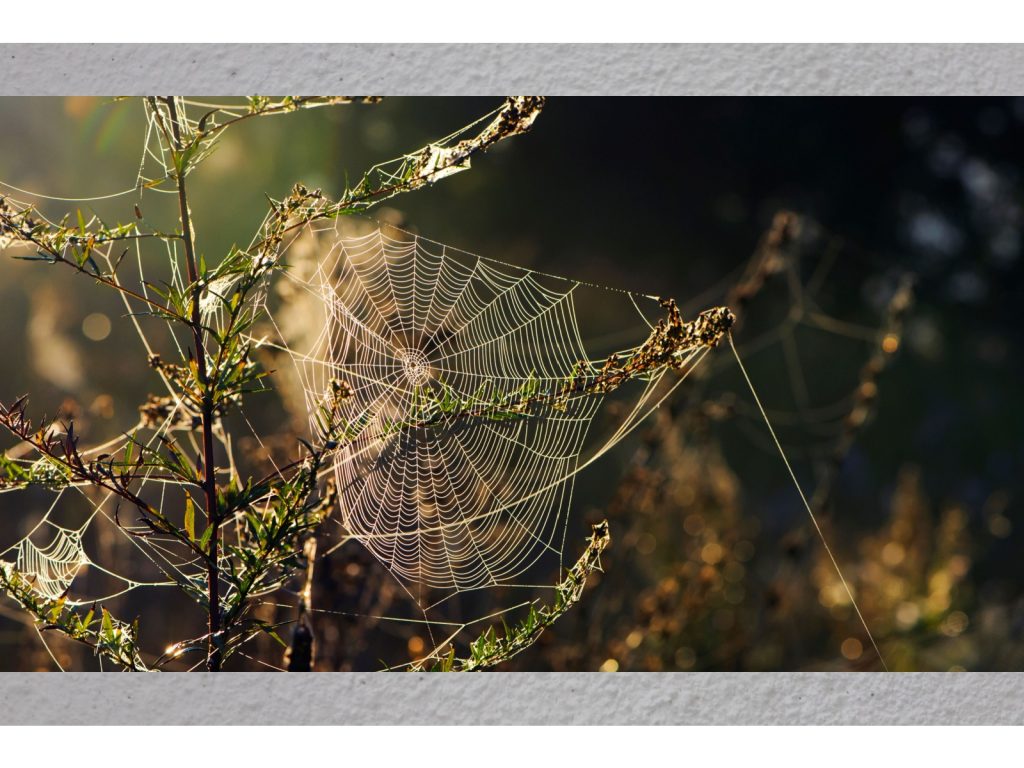
If you suddenly start seeing more spiders around your home in the autumn months, you’re not imagining it. Spider season is a real thing! In September, the cooler weather starts, and the spiders come inside for warmth and to mate. They’re most active early morning and late night. SPider season generally only lasts until late October or early November, although my house is spider season year-round!
How to Naturally Keep Spiders Away
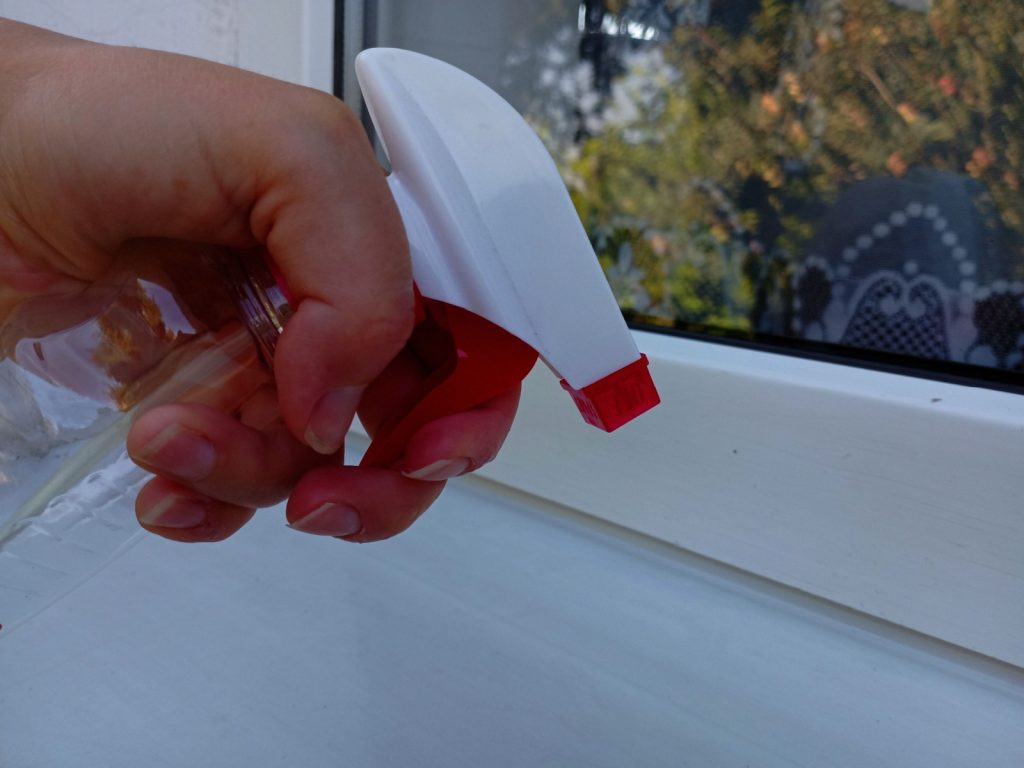
Spiders aren’t fans of certain scents, so using those strategically can help keep them out. Peppermint oil and tea tree oil are excellent choices. Simply add about 15-20 drops of either oil into a spray bottle filled with water and spray it around doorways, windowsills, or any other areas where spiders are likely to crawl through.
Vinegar can also do the trick. Other scents that work include citrus oils like lemon, lime, or citronella. But please, please be careful if you have pets, as essential oils can be extremely dangerous to them.
In addition to oils, you can try cinnamon sticks or conkers, which are believed to repel spiders. You can also remove any webs you find, along with their egg sacs. Spiders can lay up to 300 eggs in one sac, and by removing their webs, you’re disrupting their habitat and food supply.
Why You Shouldn’t Get Rid of All Spiders
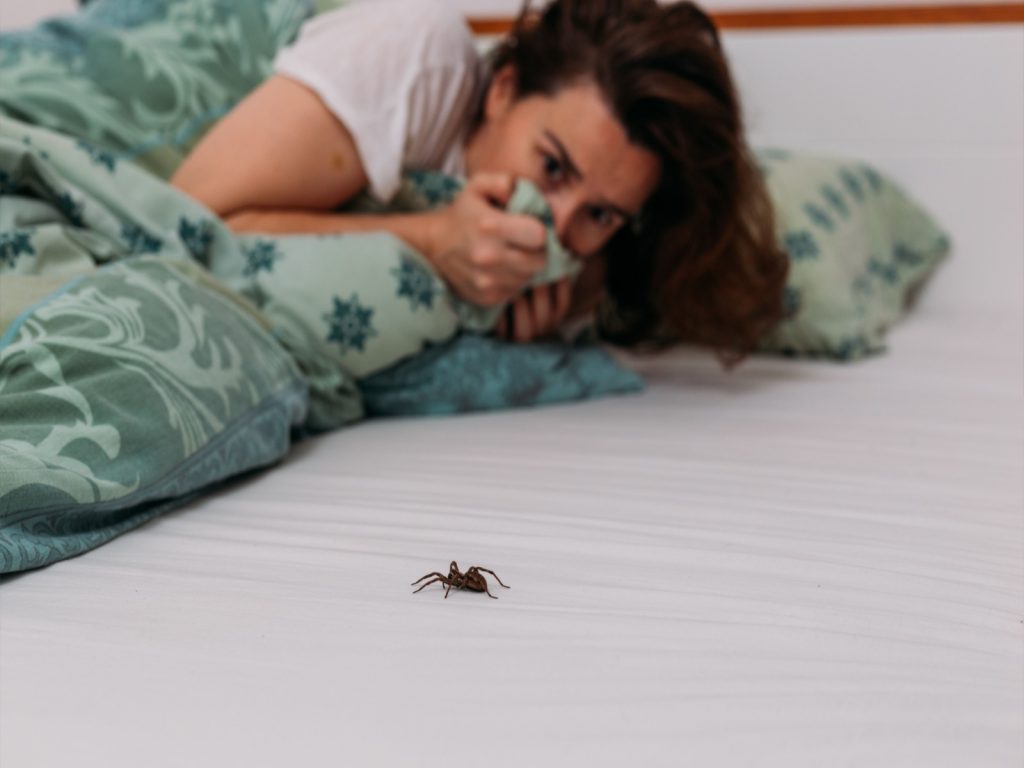
While it might be tempting to shoo away any spider you see, there’s a good reason to let them stay. Spiders are part of your home’s natural pest control system. They eat insects like flies, mosquitoes, and moths—critters that can cause more problems than spiders ever could.
If you remove all the spiders, you may find yourself dealing with more of these pesky insects, which could damage clothing, curtains, and even bite you!

